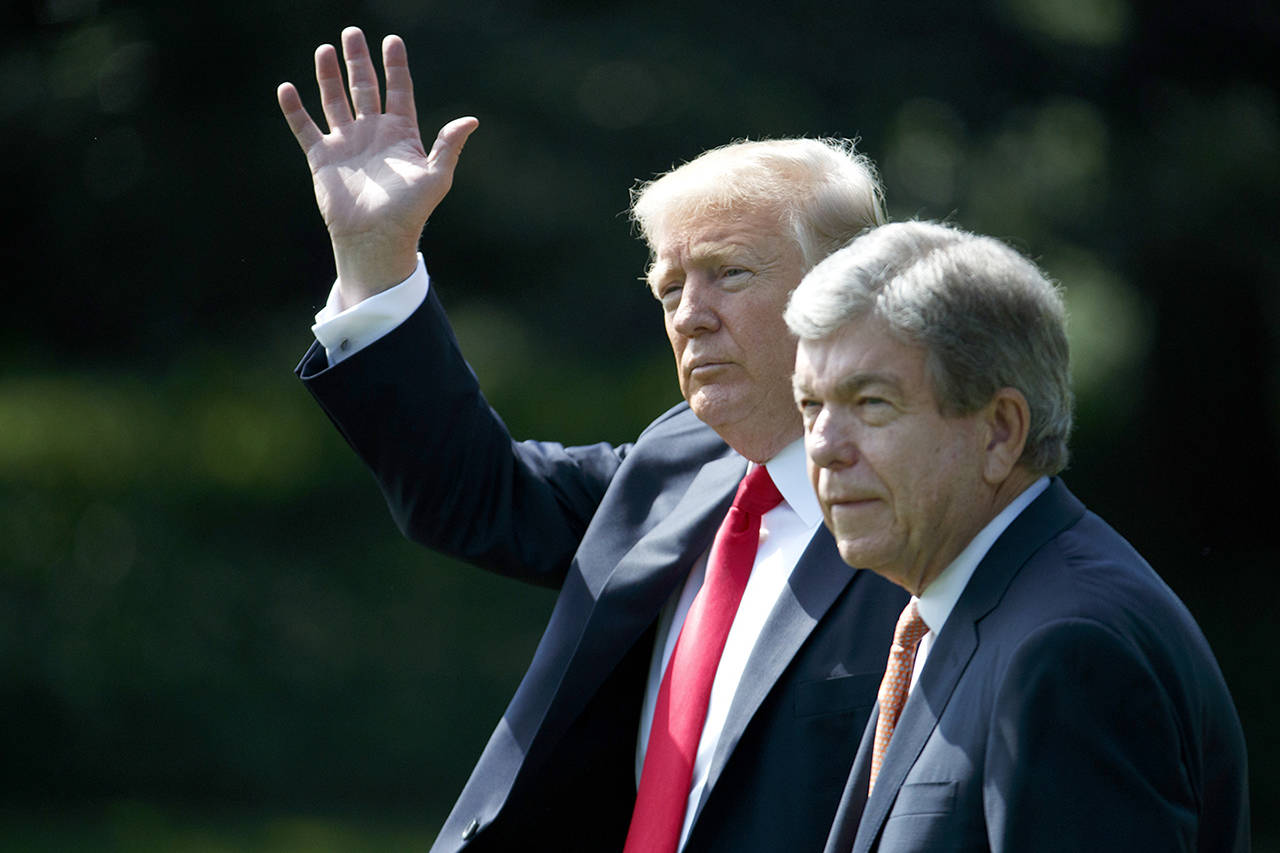By Jim Puzzanghera, Los Angeles Times
WASHINGTON — In a speech heavy on populism but almost devoid of specifics, President Donald Trump on Wednesday launched what the White House said will be an aggressive push for a tax code overhaul centered on slashing the rate paid by companies.
“Lower taxes on American business means higher wages for American workers and it means more products made right here in the U.S.A.,” Trump told a crowd at the Loren Cook Co. manufacturing plant in Springfield, Missouri.
As expected, Trump provided no new details on a tax plan that he is leaving largely to congressional Republicans to draft. Advisers and lawmakers have said it would be unveiled in the coming weeks, based in part on a skeletal one-page outline the administration released in April.
The president seemed to hedge on one of the few specific pillars of that outline and his earlier campaign proposal — reducing the U.S. corporate tax rate to 15 percent from 35 percent. In a nod to the difficulties of getting a cut that large approved by deficit-wary lawmakers, Trump said that the rate would “ideally” be lowered to 15 percent.
Instead of details, Trump provided a broad tax vision that he called “the American model” — a mix of populism, nationalism and Reagan-esque promise of broad-based benefits flowing from the top down — designed to lead to “one glorious American destiny.”
The goal is to end “the crushing tax burden on our companies and our workers,” Trump said.
Trump laid out four familiar principles for a tax overhaul: Simplifying the code by eliminating unspecified “special interest loopholes”; slashing the tax rate paid by businesses; providing tax relief for middle-class families; and changing the way the U.S. treats foreign earnings to bring corporate money home from overseas.
But Trump didn’t explain exactly how he planned to accomplish those and didn’t address nettlesome questions, such as how he would cut tax rates without exacerbating the large federal budget deficit.
The Republicans on Capitol Hill whom he is relying on are themselves divided over some details, which explains why they also have not produced a tax overhaul bill despite controlling Congress since January 2015.
Cutting rates and overhauling the tax code was a major campaign promise for Trump and congressional Republicans in 2016, and their aim is to accomplish that by the end of 2017.
But they face a daunting task as they are running out of legislative days this year. The last major tax overhaul, signed by President Ronald Reagan in 1986, took a year and a half to push through Congress.
Senate Democratic leader Charles Schumer said Wednesday that Trump won’t succeed with a populist pitch for his yet-to-be released tax plan if he sticks to his promises to make changes that analysts have said will mostly benefit corporations and the wealthiest 1 percent of wage earners.
Schumer said Democrats would work with Trump and Republicans, but would not support any plan that cuts taxes for the top 1 percent of earners, forces the middle class to pay more taxes or increases the federal budget deficit.
“Throughout his first seven months in office, the president’s repeatedly talked a good game when it comes to the working class,” Schumer said. “But just about everything he’s done has benefited the wealthy special interests.”
The general outlines of Trump’s plan were made public in April on a single page with 19 bullet points.
It called for slashing the corporate tax rate to 15 percent, a level that even many Republicans believe is unrealistically low given the revenue that would be lost. The administration also wants to apply the new rate to small mom-and-pop businesses that file through the individual tax code, but critics say that would also benefit large partnerships, such as hedge funds, law firms and some of Trump’s own businesses.
Trump noted Wednesday, as critics of the tax code often do, that the U.S. corporate rate is “dead last” among industrialized nations.
“We have totally surrendered our competitive edge to other countries,” Trump said. “We’re not surrendering any more.”
But many companies pay a lower corporate rate by using deductions in the tax code. And while the corporate tax rate is the highest of the 35 advanced economies in the Organization for Economic Cooperation and Development, the overall U.S. tax burden is among the lowest.
U.S. tax revenue as a share of total economic output was 26 percent in 2014, the fourth-lowest among OECD nations.
The April plan would nearly double the standard deduction and reduce the number of personal income tax brackets from seven to three, with the top rate for individual taxpayers declining to 35 percent from 39.6 percent.
In addition, Trump wants to repeal the estate and alternative minimum taxes, two changes that would mostly benefit wealthy people.
To help offset the lost revenue from the tax cuts, the White House wants to eliminate “special interest” tax breaks that it mostly has not identified.
One break the White House has targeted for elimination is the ability for taxpayers to deduct payments they make for state and local taxes. White House and congressional Republicans also are considering putting new limits on the deduction for home mortgage interest.
Both of those changes would be a major hit to residents of states with high taxes, pricey real estate and wealthier earners. Most of those states voted Democratic in the 2016 presidential election.
White House officials had said in advance of Trump’s speech that his pitch would be bipartisan in hopes of luring Democratic support.
But Trump he appeared to undercut that effort by targeting Sen. Claire McCaskill, D-Mo., who is running for re-election next year.
“Your senator, Claire McCaskill, must do this for you and if she doesn’t do this for you, you have to vote her out of office,” Trump told the crowd.
Talk to us
> Give us your news tips.
> Send us a letter to the editor.
> More Herald contact information.

























